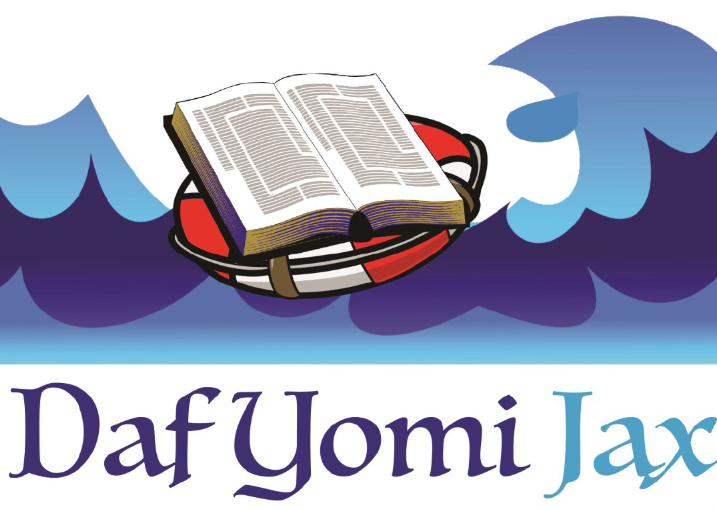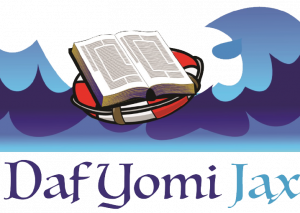Yoma 19-25
יומא י“ט-כ“ה

From the Desk of Rabbi Yaakov Fisch
It has been a while since I published the Daf Yomi newsletter. It takes an extraordinary amount of time to put together all the Daf content. I regret to say that since Pesach, I have just been pushing off restarting this as I have been quite busy. After the Miron tragedy, I was sad and felt that I need to up my (spiritual) game. Furthermore, a couple of days after the tragedy we (coincidentally?) read about the Kohanim pushing their way on the mizbeiach to do the avoda. What’s interesting to learn is the safety measures that were adopted after an accident in the Beis Hamikdash. It’s hard to believe that all of Klal Yisroel learning the Daf Yomi randomly studied this page out of the thousands of pages in the Talmud. I believe that it was some glimmer of recognition from above amidst the great darkness that we find ourselves in now. In any event, I would like to dedicate the words of Torah from this week to the memory of the 45 holy souls that were tragically killed last week in Miron.
Have a Peaceful Shabbos,
Rabbi Yaakov Fisch
Yoma 19
The Gemara relates a story that a rabbi’s name was mispronounced. Instead of pronouncing the name as קבוטל, it was pronounced as קפוטל. The other rabbi attempted to show him with a hand signal that it was incorrect. He could communicate this to him non-verbally as this was in the middle of reciting the Shema. The Gemara challenges this by asking how this was appropriate, and it quotes a braisa in the name of Rabbi Elazar Chisma that says it’s entirely inappropriate in the middle to communicate in any form and that includes the non verbal forms as well. The Gemara concludes that there is a distinction between the first paragraph of the Shema in which no communication is permitted at all and the second paragraph of Shema on which non verbal communication is permitted. The Shulchan Aruch rules in Ch. 63:6 of the Laws of Shema that one may not wink, make facial expressions, hand motions or any other non verbal communications during the recitation of the first paragraph of the Shema. This is even prohibited for the purpose of
a Mitzvah. These are the words of the Shulchan Aruch: הַקּוֹרֵא קְרִיאַת שְׁמַע, לֹא יִרְמֹז בְּעֵינָיו, וְלֹא יִקְרֹץ בִּשְׂפָתָיו, וְלֹא יַרְאֶה בְּאֶצְבְּעוֹתָיו בְּפָרָשָׁה רִאשׁוֹנָה שֶׁהוּא עִקַּר קַבָּלַת עֹל מַלְכוּת שָׁמַיִם, מִפְּנֵי שֶׁנִּרְאֶה כְּקוֹרֵא עֲרַאי, וּכְתִיב וְדִבַּרְתָּ בָּם, וְדַרְשִׁינָן עֲשֵׂה אוֹתָם קֶבַע.
The Mishna Berura adds that ideally one should not engage in non verbal communication even during the recitation of the second paragraph of the Shema. These are the words of the Mishna Berura:
ויש מחמירין גם בפרשה שניה אך לדבר מצוה לכו”ע מותר לרמוז בפרשה שניה אבל להפסיק להדיא לא עיין לקמן בסימן ס”ו:
Yoma 20
The Mishna discusses the importance of Terumas Hadeshen. This was the practice of removing the ashes from the altar and was the first order of business done every day in the Beis Hamikdash. There was competition among the Kohanim to perform the Kohanim as the first Mishna of the second Perek articulates. Eventually, they settled on drawing lots as to which Kohen received the privilege of serving the Terumas Hadeshen. The Torah in Parshas Tzav introduces to the mitzvah of the Terumas Hadeshen with the following words: זֹאת תּוֹרַת הָעֹלָה or “this is the teaching of the Olah.” It’s a bit hard to understand how removing the ashes prior to the morning service of the Tamid is ranked as the Olah itself! After all, the Olah is the most exalted and sublime part of the service. How does the mundane act of removing ashes fit within the
exalted avoda of the Olah? I believe this teaches us an essential lesson in Avodas Hashem or the Service of G-d. There are certain aspects in Avodas Hashem that are considered more glamorous than others. For example, it is more honorable to get an aliya on a Yom Tov than clean up a shul to get it ready for a kehila to use it for davening. Suppose a person has a perspective that his contribution of Avodas Hashem is L’shem Shamyim or for the sake of Heaven then it should not matter if you are getting a distinguished aliya or cleaning up a mess in shul. That is a profound message from the message of the Terumas Hadeshen. You can be scooping out ashes, cleaning up a mess, and taking out the garbage, and if you do it for the sake of Heaven it is equivalent to bringing the most exalted sacrifice of all-the Olah.

Yoma 21
Rav Yehuda states in the name of Rav that when Jews traveled to the Beis Hamikdash for the Regel (Pesach, Shavuos, and Sukkos), there was an abundance of people, and yet miraculously, when they would prostrate themselves, there was space for everyone to prostrate themselves. The Gemara quotes the well-known Mishna in Pirkei Avos, which states that this was one of 10 famous miracles in the Beis Hamikdash. Rashi says that everyone had a space of four Amos to prostrate themselves. He also says that the reason for this miracle went beyond logical solutions for managing crowd control. One should not hear the vidui (confession) that the person next to him was reciting as this was private, and it might cause the person reciting the vidui some shame. This was the reason behind the miracle of separating everybody a few feet from each other so each individual will have the opportunity to recite the vidui in private. The Maharsha asks on Rashi, why does he pivot towards interpreting
the Gemara that it took place on Yom Kippur and the issue was that people should say their vidui with privacy? Why doesn’t Rashi simply interpret the Gemara that the purpose of the miracle was to accommodate for better crossword control? The Siach Yitzchak answers that Rashi was bothered to interpret the Gemara as referring to the 3 regalim since it would not have been necessary for all of Klal Yisrael to be present at the same time in the Beis Hamikdash! It would have been sufficient to either have sent representatives on their behalf or taken shifts. Whereas on Yom Kippur, it was necessary for the entire of Klal Yisrael to be present at the same time to hear the Kohein Gadol recite Shem Hameforeish during the Yom Kippur Service. That is why Rashi felt compelled to interpret that our Gemara is referring to Yom Kippur. Everyone was engaged in saying vidui and the miracle of giving everyone space to not hear the vidui/confession of someone else and be ashamed.
Yoma 22
Rabbi Yitzchak talks about a well known concept and that is one should not count the Jewish people in a head count. (It is a common practice before the start of a minyan that instead of directly counting people, we have the custom of indirectly counting the people by reciting a verse with ten words). The source for this is a verse in the Book of Shmuel that says ויפקדם בבזק . The literal translation is that Saul counted them (the shards of ceramics). The context is that he is referring to the people that went out to war to fight the battle against Nachash the Amoni and wanted to know who was going to battle and doing various tasks. Instead, of directly the people he counted the shards of ceramics and based on that number he knew how many people were present. A question that is asked and that is why is it necessary to procure a
source from Sefer Shmuel when the Torah explicitly says that one cannot count the people directly and everyone counted should contribute a half shekel! The Maharsha answers that in the case of the half shekel the Torah refers to atonement in the aftermath of the sin of the Golden Calf. One would not have necessarily thought that in general one should refrain from directly counting people and that is why we need the source from Sefer Shmuel. Another approach is the Sefas Emes who writes that in the case of the half shekel it was referring to the entire Klal Yisrael. That is clear that we may not conduct by a headcount. But a portion of Klal Yisroel, how can we know that we not conduct a headcount—that is why we need the source from Sefer Shmuel
Yoma 23
The Gemara quotes a teaching from Rava, which is a secret gem. The Sages have enlightened us that if we internalize this message, it is a golden ticket to achieving repentance and spiritual purity. After all, who wouldn’t want to have all their sins forgiven? Rava teaches us the pathway as to how one can get to a spiritual state of purity. All one has to do is be a forgiving person and forgive others who wronged him. If someone can show the strength of character to forgive others, than G-d will forgive him as well. There is a famous story with Rabbi Chaim Shmuelevitz z’l, the Rosh Yeshiva of the Mir in Yerushalayim. During the Six Day war, he was gathered in the bomb shelter with many yeshiva students as they were praying fervently that G-d spare them from any tragic outcome. The Mir Yeshiva is located in the area of what was the border of the Israel- Jordan at the time. It was at
the heart of the barrage of the wartime hostilities. There was a missile that landed on the rooftop of the Mir and miraculously, it did not explode. Rabbi Shmuelevitz explained that the miracle of why the yeshiva was spared was not necessarily because of all the davening or learning that was done in the yeshiva. He said that while he was in the bomb shelter, he overheard an individual saying that another individual wronged her and was willing to forgive the person. Reb Chaim explained that this person showed tremendous gevura or strength of character by willing to forgive the other person. In her merit, G-d spared the entire Mir Yeshiva in that precarious moment!
:
Yoma 24
There is a debate between Rav and Levi as to what components of the Avoda are considered so off limits to a Israelitie to the point if he serves it is considered capital punishment. According to Rav, Terumas Hadeshen is not part of this list. The reason for this omission is that Terumas Hadeshen or the removal of the ashes is not the final part of the Avoda or Service. Only elements of the service which are considered the concluding elements or the עבודה תמה is off limits to the Israelite to the point that if it is performed by him than there capital punishment. The Gemara questions that an Israelite who sets up the menora should be liable! The response is that there still is component of the avoda afterwards. There is some back and forth as to what is considered the final component of the avoda in regards to lighting the menora. The Gemara considers the actual kindling or הדלקה should be something that an Israelite is liable for since it is the final component of the avoda. The Gemara reponds that the kindling is not a Mitzvah. The Rishonim question, how is it possible to suggest that the kindling is not a Mitzvah! The Torah states in Parshas Behaloscha that its incumbent upon the Kohen Gadol to light the menora. The Ritva answers that it’s stating the Kohen Gadol lighting the menora as a matter of fact and not as a Mitzvah.
Yoma 25
The Gemara has a debate if there were additional lots drawn for the מחתה. That was the Kohen who brought the coals for the incense in the shovel from the outer altar to the inner altar. In the course of the discussion, Gemara mentions that this task brought merit to the Kohen that performed it. The specific merit that it brought to the Kohen was wealth. For this reason, it was brought down that the Kohen that had this privilege did not merit this more than once. The Rema in Ch. 265:11 of the Laws of Mila says that similarly one that has the honor of being sandak at a Bris has a merit to become wealthy. The Rema goes on to quote the Mahril that one should not give this honor to the sandak more than once. These are words of the Rema.וְיָפֶה כֹּחַ הַסַּנְדָּק מִכֹּחַ הַמּוֹהֵל לְהַקְדִּימוֹ לִקְרִיאַת הַתּוֹרָה, דְּכָל סַנְדָּק הָוֵי כְּמַקְטִיר קְטֹרֶת (מהרי”ל בְּשֵׁם ר”פ), וְלָכֵן נוֹהֲגִין שֶׁלֹּא לִתֵּן שְׁנֵי יְלָדִים לְבַעַל בְּרִית אֶחָד כִּדְאָמְרִינַן גַּבֵּי קְטֹרֶת: חֲדָשִׁים לַקְּטֹרֶת
The Noda BeYehuda adds that this concern does not apply to the Mohel and one can give the honor of Mohel to whoever is the most competent no matter how frequently he has performed the mitzvah. The Chasam Sofer has an interesting explanation on the comparison between the Kohen bringing the Ketores/incense and being the sandek. The Ketores could change the mazel of a particular individual regarding children, health, and parnassah. Similarly, that is what the merit of being sandek can accomplish. Whereas, being a Mohel argues the Chasam Sofer, the individual has already achieved that as the Gemara states, that (many times) the Mohen has a blood lust (based on his Mazel), and he can work in himself to channel that for a mitzvah. Since the Mohel is obviously someone who works on his Middos, this merit does not apply to him as it is to the sandek.
Weekly Quiz
-
1. What is the difference between the first paragraph of Shema and the second paragraph of Shema in terms of what kind of communication is allowed?
-
2. What was the very first thing done for the Avoda in the Beis Hamikdash every day?
-
3. What miracle took place in the Beis Hamikdash to ensure there was no overcrowding?
-
4. What does the Gemara say is an irresponsible time to travel?
-
5. What miracle was associated with the bread on the shulchan?
-
6. What is the proof that one should not count the Jews by a headcount?
-
7. What was the logic of Shaul not to kill the Amalkeim?
-
8. Please provide two reasons why the monarchy was discontinued from Shaul.
-
9. If an Israelite performs Terumas Hadeshen , is there a consequence. Why?
-
10. What was the tribe of Levi and Yissacher known for?
